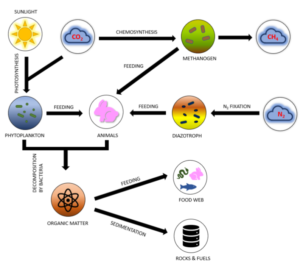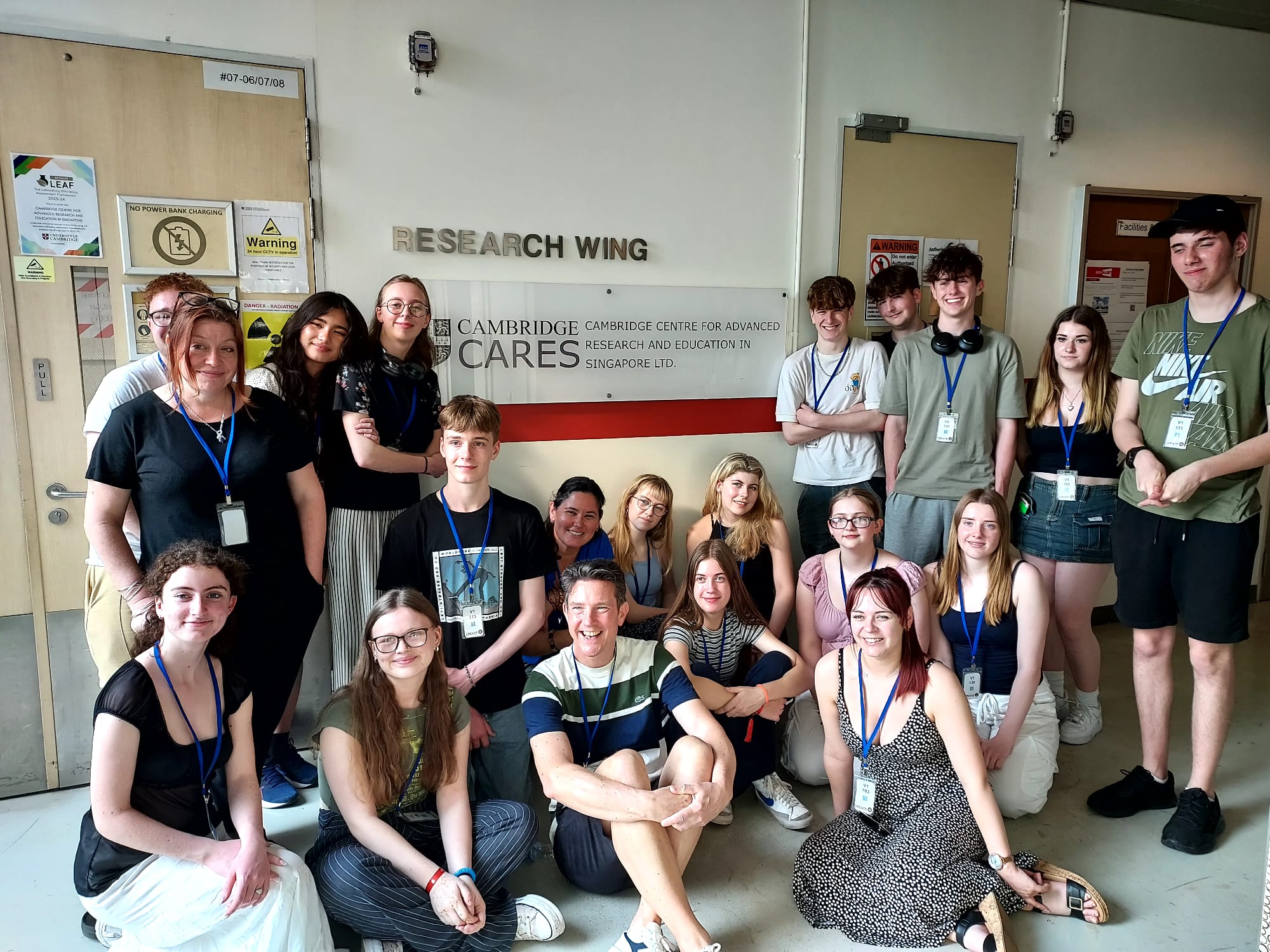Chi Hung (Clifford) Vo, a CARES PhD student from NUS, discusses the role that microbes play in storing excess carbon.
It is widely accepted that the current level of carbon dioxide gas in the atmosphere is changing the Earth’s climate, with the negative effects being seen around the world. Climate change is a large-scale problem, with many equivalent, large-scale initiatives in place to try and reduce carbon emissions, make carbon-producing processes more efficient and even remove tonnes of carbon dioxide from the atmosphere. There is, however, another method that could play a disproportionately large part in reducing our carbon dioxide levels: microbes.
Microbes are a diverse group of microscopic organisms which are invisible to the naked eye. They are typically about 0.2 to 10 micrometres in size (10 to 1000 times smaller than the thickness of a strand of human hair). Microbes can live in various habitats: soil, the sea, lakes, ponds, swamps, the atmosphere and even man-made surfaces. Many microbes also live on and inside the bodies of other organisms, for instance the cyanobacteria in lichens growing on tree barks, the gastrointestinal microbiota in the digestive systems of humans and animals, the skin flora on the epidermis. In fact, there are as many microbes on and inside our bodies as the number of human cells we have. Some microbes, called extremophiles, even adapt to survive in extreme environments like hot springs, hydrothermal vents, oceanic trenches, deserts, permafrost and rocks deep in the Earth’s crust.
Microbes often live as communities of many different types, and may form biological interactions with higher organisms. The members of the communities may exhibit mutualistic, commensalistic or parasitic behaviours towards one another. Despite their small individual size, microbes collectively represent a significant portion of the global biomass, constituting more than 30% of the total DNA in the biosphere. While the immediate impact of a microbe is on a miniscule scale, their combined action plays a critical role in shaping the macroscopic landscape. Microbes can perform carbon fixation, a process in which carbon dioxide (CO₂) and other inorganic carbon compounds are converted into organic carbon compounds. These carbon compounds are thus incorporated into the structures of the microbes and can be consumed as energy and carbon sources by higher organisms in the ecology. Some other microbes called diazotrophs can convert the inert nitrogen gas in the atmosphere to ammonia and other nitrogen compounds, which serve as the organic nitrogen sources for higher organisms. Other microbial activities include the decomposition and recycling of nutrients, the production of oxygen and methane and the weathering of rocks. As a result, damage at the microbial level may lead to greater instability in the ecosystem as compared to that incurred higher up the food chain. In fact, it is thought that the emergence of oxygen-producing bacteria 2.45 billion years ago altered the atmospheric composition, leading to the mass extinction of anaerobic species.
Microbes that use CO₂ to produce organic compounds are called autotrophs. Examples include phytoplankton and methanogens. Phytoplankton are a group of microbes living on the surface of a body of water such as oceans and lakes. They serve as a large carbon sink while simultaneously producing oxygen through photosynthesis. It has been estimated that phytoplankton contribute half of the photosynthetic activity on Earth, while terrestrial plants account for the remaining half. A well-known example of phytoplankton is green algae, which are now cultivated at an industrial scale (algaculture). These green algae farms do not only contribute to carbon fixation, but also yield chemical feedstock, green fuels, pharmaceutical compounds and can be a food source. Unlike phytoplankton, methanogens do not perform photosynthesis. Instead, they undergo a process called chemosynthesis to convert CO₂ and other simple carbon compounds into methane gas. Methanogens are commonly found in oxygen-free environments such as wetlands and animals’ digestive tracts. Methanogens play an integral part in wastewater treatment, in which they work with other microbes to convert organic pollutants into methane.
For large-scale applications of these autotrophs in carbon reduction, it is essential to enhance their carbon fixing capability. In addition, they can be engineered to produce useful chemical compounds to improve the sustainability and profitability of the technology. To achieve these goals, genome-scale metabolic modelling is an excellent tool. A metabolic model is a depiction of all the biochemical reactions occurring inside an organism, together with the associated enzymes and genes. Metabolic models are often constructed from the genome sequence of the organisms. Based on the central idea of molecular biology, DNA specifies RNA, which in turn specifies the proteins being produced. The proteins, often enzymes, determine the biochemical reactions inside an organism.

A detailed genome-scale metabolic model has good predictive power. For instance, the effect on an organism’s carbon fixation after changing its feedstocks or living environment can be predicted. A genome-scale metabolic model also allows for identification of certain genes that can be removed from or introduced into the microbes to enhance their carbon fixation capabilities or to produce desired chemical products. The information obtained from a metabolic model influences future research and experiments that could lead to more efficient carbon dioxide fixation methods. There are many ways in which we can mitigate climate change, but the humble microbe might just save the day.
Chi Hung’s research focuses on the construction and utilisation of a metabolic model for the methanogen M. maripaludis S2, an organism capable of capturing CO₂ and producing methane. Knowledge gained from the study of this organism will allow genetic modification to enhance its CO₂ capture capabilities. A promising application of this study is the use of a bioreactor to convert CO₂ into useful fuels or other organic products.


